











FOUNDED May 11, 1966
FOUNDER/EDITOR
Ed Clayton
Immortalis Memoria
PUBLISHER/EDITOR
J. Lowell Ware
Immortalis Memoria
The Atlanta Voice honors the life of J. Lowell Ware.
PUBLISHER
Janis Ware jlware@theatlantavoice.com
PRESIDENT/ GENERAL MANAGER
James A. Washington jaws@theatlantavoice.com
EDITOR IN CHIEF
Marshall A. Latimore mlatimore@theatlantavoice.com
MANAGING EDITOR
Itoro Umontuen iumontuen@theatlantavoice.com
ART DIRECTOR
Vincent Christie vchristie@theatlantavoice.com
COPY CHIEF
Martel Sharpe newsroom@theatlantavoice.com
DIRECTOR, DIGITAL MEDIA
Jeremiah Long jlong@theatlantavoice.com
ADVERTISING, SALES & CIRCULATION
VP, BUSINESS DEVELOPMENT
Richard Dunn dunn@theatlantavoice
ADVERTISING ADMINISTRATOR
Chia Suggs advertising@theatlantavoice.com
CIRCULATION MANAGER
Terry Milliner SALES
R.D.W. Jackson rdwadman@gmail.com
CONTACT INFORMATION
633 Pryor Street, S.W. Atlanta, GA 30312
Office: 404-524-6426 Fax: 404-527-5464

The Atlanta Voice corrects all errors of fact published in its newspaper. To report an error of fact, send correction to newsroom@theatlantavoice.com.
Homebuying season is one of my favorite times of the year. This is when we normally see housing activity rise, whether it’s from first-time homebuyers, move-up buyers or even homeowners who think it’s a good time to do some renovations. Wells Fargo is proud to sponsor important publications like this one that provide helpful information to those who are seeking the American dream of becoming a homeowner.
Owning a home is a sense of pride for many Americans and we celebrate the benefits that homeownership brings to our families and our communities. For African Americans in particular, homeownership is the primary vehicle to build generational wealth. Now may be a good time to buy for those who are ready. Wells Fargo economists report in their March 2019 Housing Chartbook that momentum in the housing sector has improved modestly this year. Mortgage rates have decreased slightly and there have been some favorable changes in housing prices. According to the Chartbook, the median price of a new home has fallen 3.8% over the past year.
Despite some improvements, housing inventory and affordability remain major hurdles to homeownership. In addition, many find it hard to save for a down payment and/ or closing costs. African Americans face additional economic hurdles like higher levels of unemployment and underemployment
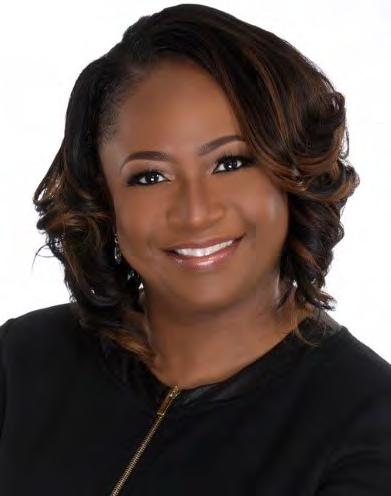
country. Census Bureau data show that African Americans still have the lowest homeownership rate of all ethnic groups at 41%. According to the National Association of Real Estate Brokers’ (NAREB) State of Housing in Black America, the gains in homeownership that African Americans made before the recession have been lost.
Wells Fargo continues to make progress on the $60 billion African American homeownership commitment we announced in 2017, which commits to help at least 250,000 aspiring homeowners purchase a home in 10 years. So far, we have helped more than 42,000 African Americans become homeowners with $10.6 billion in financing and provided $4.7 million to support homebuyer education and counseling efforts.
that keep homeownership at bay. What the mortgage industry, government officials and housing nonprofits must focus on is removing those barriers and helping to close homeownership gaps that exist in this
While we are closer to our African American homeownership goals, there is a lot of work to do in this space. The work to increase African American homeownership will not be easy and cannot be done by one organization. It’s going to take the mortgage industry, government officials and housing advocates working together to help remove those barriers and ensure everyone has equal access to homeownership. At Wells Fargo, we are dedicated to working with others and doing everything we can to help boost the African American homeownership rate. It’s important to families, to communities and to the economy of this country.

www.theatlantavoice.com

Hoping to buy your first or next home? It may be more doable with yourFirst Mortgage®, our 3% down payment option on a fixed-rate loan.
Bring less money to your closing
And if your down payment is from 3% to less than 5%, and you complete an approved homebuyer education course, you’ll be eligible to receive a $750 closing cost credit.
We are here for you
We can explain the eligibility factors — like loan amount, type of loan, and property type — and give you the “can do” support you’ll need to buy your new home.
Note: With a low down payment, mortgage insurance is required and will increase your monthly payment.
Call, stop by, or click today!
250 E Ponce De Leon Ave Floor 02
Decatur, GA 30030-3440 (404) 929-4731
wfhm.com/loans/decatur/index-branch.page
By Nathaniel Smith
The Atlanta Public School System (APS) under the direction of its recent boards and Superintendent Meria Carstarphen has come a long way from the dark days of the APS cheating scandal. Looking at this past graduation season, I saw smiles full of hope as students progressed beyond the hallowed halls of high school. So now buildings stand partially unused for the summer season. These buildings that cost millions to build and sit on prime pieces of real estate in some areas are grounds for economic development, community advancement, and affordable housing if we have the courage to dream.
In some cases, in the communities where APS has buildings, housing prices are skyrocketing. It’s more challenging for teachers and staff to find affordable housing near their places of work. It’s even more challenging for families to find stable affordable housing, which force some families to move in the middle of the year, so they’re not overburdened with housing costs. This “churn ” or student mobility, which is high in Atlanta Public Schools, can be detrimental to students and inhib -

it learning.
Seeing this challenge, then APS Board Chairperson Courtney English created the Affordable Housing Taskforce, a blue-ribbon committee with some of the brightest minds and respected leaders in the city, which I still have the pleasure of chairing. The goal of this team was to develop a strategy to utilize APS-owned buildings and land to encourage affordable housing through selling and redevelopment. We modeled our work after the Los Angeles Unified School District’s Affordable Housing resolution and presented our recommendations to APS more than a year ago. Those recommendations have not been
ratified and it’s disappointing.
Dr. Martin Luther King, Jr. talked about the “urgency of now” and there’s definite urgency for kids, families, teachers and staff in APS to find affordable places to live as communities become less affordable day by the day. As schools become better, more affluent families are attracted to these schools, driving up housing prices and making the affordability problem in these communities more difficult. It’s unfortunate that the APS Board and Superintendent Carstarphen don’t have the same level of urgency around the affordable housing recommendations put forth by the taskforce. But hope is not lost. There are some institutions who are trying to stem the tide of student mobility including the Kindezi School at Old Fourth Ward , who is trying to use a weighted lottery to admit more students from economically disadvantaged families in its rapidly gentrifying surrounding neighborhoods. I admire what Kindezi is trying to do. This should be an inspiration to APS, who has a clear opportunity to influence the affordable housing trajectory in the city and play a role in leading the way. All they need to do is ratify the rec-
ommendations of the Affordable Housing Taskforce that other city leaders support, including HouseATL .
My hope is that sometime soon, APS will realize that we cannot afford to wait. It’s time to ensure affordable housing for teachers, staff and families is a top priority for our city leaders and is realized before student mobility rates climb or the next snowpocalypse hits keeping APS schools closed for long periods of time because teachers and staff don’t live near their respective schools.
After you finish reading this article, I encourage you to reach out to your APS Board of Education member and Superintendent Carstarphen and encourage them to ratify the recommendations of the Affordable Housing Taskforce so that APS’ students, teachers and staff all have the opportunity to prosper.
Nathaniel Smith is the founder and chief equity officer of the Partnership for Southern Equity and chairman of the Atlanta Public School System’s Affordable Housing Taskforce.


By Charlene Crowell
In this, the 400th year since the first enslaved Africans were brought to the shores of Jamestown, Virginia, many Black Americans have noted the many changes and advances that our forefathers were denied. A series of 1960s federal legal protections collectively known as civil rights legislation addressed the ills of discrimination in education, employment, public accommodations, voting rights, and fair housing.
Despite decades of legal assurances, discrimination still continues, encouraged with a one-two punch of regulatory rollbacks and dwindling enforcement. Particularly when it comes to fair housing, regressive assaults are attempting to diminish, if not eliminate many hardwon rights.
For example, disparate impact, a long-standing protection that is deeply rooted in the law holds that landlords, real estate companies, municipalities, banks, and insurance companies should choose policies that apply fairly to all consumers. This protection has played an essential role in enforcing the Fair Housing Act, helping to ensure that harmful, inequitable, and unjustified policies are either prevented or recognized
For all housing stakeholders, disparate impact has resulted in fairer outcomes but must also be preserved if we as a nation are to continue along this progressive path towards fair housing.
An April 11 op-ed penned by Rep. William Lacy Clay noted the importance of disparate impact to achieving real fair housing.
“At a time of increasing racial division, a rise in hate crimes, and persistent disparities in the housing market, we must recommit to the promise of the Fair Housing Act to prevent discrimination and open housing opportunities for all,” wrote Rep. Clay. “This is precisely why the Trump administration’s attack on a critical fair housing enforcement tool is so problematic.”
Weeks later Nikitra Bailey, an EVP with the Center for Responsible Lending, noted in testimony delivered on May 8 at a Capitol Hill hearing, “Today, African-Americans have the same rates of homeownership as they did in 1968.” Bailey added that “the white homeownership rate is 73.2% compared to 41.1% for African-Americans and 47.4% for Latinos.”
“The federal government’s role in fostering mortgage lending discrimination significantly contributes to the differences in today’s homeownership gaps between whites and people of color”, continued Bailey. “Strengthening our nation’s fair lending laws are a necessary step to address these disparities and close the racial wealth gap.”
Beyond homeownership’s racial disparities, the National Fair Housing Alliance (NFHA) found that more than a half million housing discrimination complaints have been processed since 2006, and further that most instances of housing discrimination are unreported.

NFHA asserts, “[t]he biggest obstacle to fair housing rights is the federal government’s failure to enforce the law vigorously.”
“Homeowners have used disparate impact to successfully challenge policies that redlined communities of color”, said Lisa Rice, NFHA’s President and CEO, in a recent op-ed column. “Mortgage applicants of color have benefitted from its use in preventing discriminatory lending criteria. This protection has helped victims of domestic violence to retain housing when nuisance ordinances threaten to evict them for making calls to law enforcement to report abuse.”
With Rep. Clay, Ms. Bailey and Ms. Rice agreeing that disparate impact is an important component of fair housing, modifying or weakening this proven approach would be as ill-advised as it would be unnecessary. Further, it is a standard that has been in place under the Fair Housing Act for more than 40 years and was later affirmed by the U.S. Supreme Court in 2015.
In short, disparate impact is accepted and respected as settled law. Turning HUD’s existing civil rights regulations backward would bring costs and broad uncertainty that will not help consumers, lenders, or the nation. Lenders already comply with the measure, agreeing that it is an important fair lending tool.
“Racial disparities in education, employment, healthcare, transportation, the environment, and policing will be more difficult to
challenge if this tool is weakened,” concluded Rep. Clay. “It is important to first stem the damage to fair housing enforcement, because other areas of civil rights are next in this administration’s sights.”
Charlene Crowell is the Communications Deputy Director for the Center for Responsible Lending. She can be reached at Charlene.crowell@responsiblelending.org
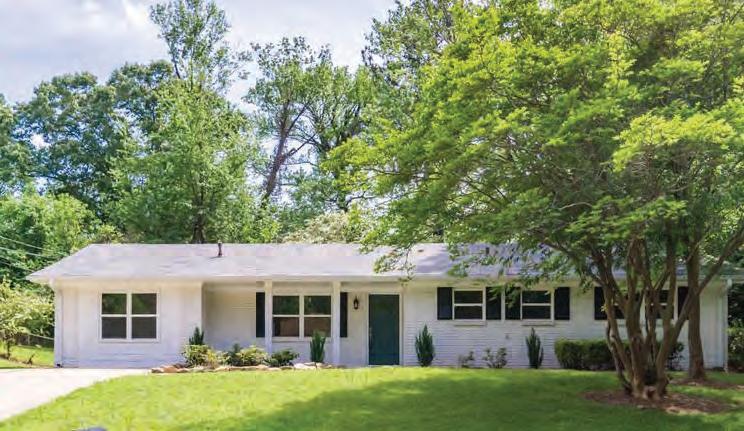
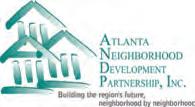


By Stacy M. Brown WI Senior Writer @StacyBrownMedia
Renovations can be expensive, but will usually add value to your home, according to experts who offered some insight on navigating the process of home additions.
“Some contractors will offer a monthly payment plan to spread out the entire cost over a period of time, rather than settling for something short of what your full vision is,” said Glenn Wiseman, sales manager at Top Hat Home Comfort.
Wiseman suggests that those seeking renovations and additions ask providers if they offer a similar plan to accommodate your lifestyle and budget better.
“Avoid disappointment by paying close attention to the details and terms of your contract. Good contractors will work hard to make sure that the expectations are highlighted within the contract and that the job is done to this stan-
dard,” Wiseman said.
For homeowners, it’s vital that anyone they hire provide a written and agreeable services contract which should include the scope of the work agreed upon – including confirming house plans, pulling permits from the city, ordering materials and getting equipment onsite, said Shawn Breyer of Breyer Home Buyers.
“Don’t just assume that your idea of a quality end-product and the contractor’s is the same. You may be expecting a move-in ready, professionally cleaned bathroom,” Breyer said. “Meanwhile, the contractor usually leaves the bathroom in broom swept condition with dirt and dust everywhere. Sometimes you can even encounter a contractor that gets 90 percent finished and proceeds to pull his crew off to work on the next home while sending back people as they free up,” he said.
Breyer continued, “This would
leave you with an incomplete build. Make sure that your contract with the contractor has a section stating that they will complete the work in accordance with the local laws and settle on the condition of the bathroom when it is completed.”
John Bodrozic, the co-founder of Digital Home Management said a detailed budget of all materials, appliances, equipment, fixtures and finishes for the project should be kept.
Homeowners should do this before a contractor is hired because it usually forces individuals to decide on different products and brands for the items in the addition.
Bodrozic said it’s also important to get at least three qualified bids from contractors and compare pricing.
“Keep track of all the actual costs, receipts, invoices, before and after photos, product warranties, owner’s manuals for everything
See RENOVATIONS on page 10




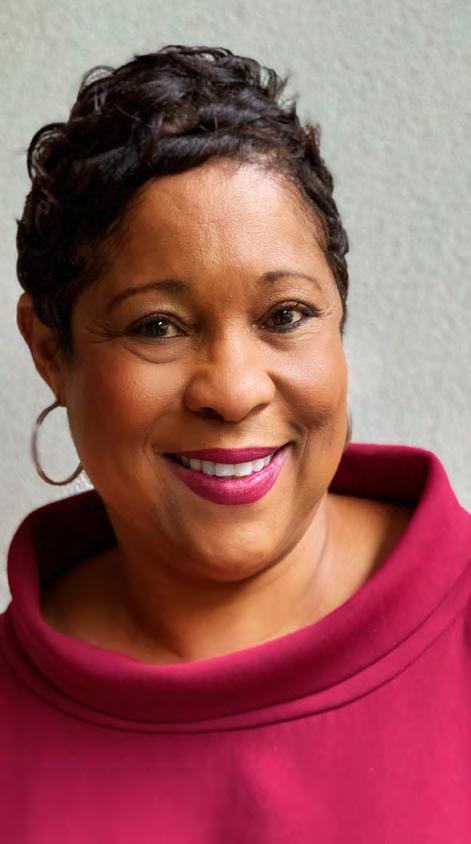
MARSHA JOHNSON, VP, Diverse Segments Market Consultant, Wells Fargo Home Mortgage
If you dream of owning a home but don’t think you have enough money for a down payment, look. You could already have enough, or you might be closer than you think.
Saving for down payment is one of the main reasons that many aspiring homeowners don’t advance to homeownership, particularly those who have low-to-moderate incomes. Some believe the myth that 20 percent down is required to own a home. That’s not true.
In reality, you may have other options. Some financing programs allow qualified homebuyers to put down as little as 3 percent. A home mortgage consultant can help determine what you may qualify for. They will also help you understand how much you need for a down payment and other upfront costs of buying a home, and for ongoing expenses such as insurance, homeowners’ association fees, and unexpected repairs.
If saving up to buy a home is your goal, how can you put more away each month to get there sooner? Here are some savings tips to consider.
Pay down credit card and loan debt so you save money on interest. (This may also boost your credit score and lower your debt-to-income ratio, which helps when applying for a mortgage.) To tackle this, start with the account with the highest interest rate, try to pay more than the minimum, attempt to make payments every two weeks instead of monthly, and consider setting up automatic payments.
Track your spending habits and evaluate what you can cut. (Many helpful budgeting apps are available.)
Small changes can add up to big savings – for example, bring your own coffee or lunch more often, carpool when possible, get your hair cut less frequently, or cook and watch movies at home more than going out.
Be energy-efficient. See how much you can shrink your energy bill. For instance, keep the air conditioning or heat lower, and turn off lights and unplug electronics when not in use.
Move money into a savings account once a month, before paying your other bills, so you get used to living on less. Split your paycheck direct deposit so a portion goes to your savings account and the rest goes into checking. Or consider setting up an automatic transfer between bank accounts, regularly sending money from checking to savings.
Make sure you’re having an appropriate amount withheld in taxes from each paycheck. If you are getting a big tax refund each year, you’re withholding more than necessary and letting the IRS temporarily hold your money interest-free. Instead, withhold less and put those extra paycheck dollars into your down payment savings. Use the IRS withholding calculator to figure this out: https:// www.irs.gov/individuals/irs-withholding-calculator
Many Americans want to be homeowners, but see saving for a down payment as a big barrier. But it does not have to be. With the facts about what’s required and with a plan to save, you could be on your way to achieving your homeownership goals.

Buying a new home is not a far-fetched idea when you get the financing and support you need.
You could be well on your way with low-down-payment options, personalized start-to-finish guidance, and a simpler online mortgage application.
Contact us to help you get started and show you the way.

BRIGITTE KILLINGS, VP, Diverse Segments Manager, East Coast, Wells Fargo Home Mortgage
The desire for homeownership in America remains high. In a 2017 NeighborWorks America survey, 93 percent of respondents said homeownership is important, very important or the most important. Homeownership is important to our economy, our families, our communities, and a key vehicle for wealth accumulation.
Becoming a homeowner is an exciting journey, and preparation is a key to success. Homebuyer education and counseling agencies are important resources to help aspiring homeowners prepare
cess to become sustainable homeowners. Through education and understanding of what to expect, homebuyers can get in a home and be successful homeowners over their lifetime.
Homebuyer counseling offers oneon-one sessions with a HUD-approved counselor who tailors interactions to the prospective homebuyer’s situation and homeownership needs. Counseling helps prospective homebuyers gain confidence and information needed to take the next step toward buying a home with activities that include budgeting, identifying credit challenges and guidance to improve their credit score, debt reduction strategies and helping to determine affordability based on income and debt. Counseling also helps to dispel common myths about obtaining a mortgage loan, like “a 20 percent down payment is required to own a home.” That is not true and holds many

homebuyers back from making the step forward and actually applying for a mortgage.
Homebuyer education focuses on the basic concepts of homeownership but is not specific to a transaction. Also provided by a HUD-approved agency, topics covered in these classes include the homebuying process, how to maintain a home and the importance of good credit. Homebuyer education classes can be helpful for aspiring homeowners who have been approved for a loan but need information on better understanding the process to achieve and sustain homeownership.
At Wells Fargo we believe in the value homebuyer education and counseling can bring to those seeking homeownership. It’s a significant component of our $60 billion lending commitment to increase African American homeownership by 2026. In the commitment, we pledged to
dedicate $15 million to support initiatives for homebuyer education and counseling for African American families. So far, we have provided about $4.7 million toward this goal.
Wells Fargo also collaborates with a number of agencies to bring homebuyer education and counseling into communities across the country. For example, homebuyer education is a requirement of the NeighborhoodLIFT program, a collaboration between Wells Fargo and NeighborWorks®America that also provides down payment assistance grants. LIFT programs have helped to create more than 21,000 homeowners since 2012.
It’s important to us at Wells Fargo that our customers are successful homeowners. And we believe that homebuyer education and counseling should be components of the homeownership journey, especially for first-time homebuyers.

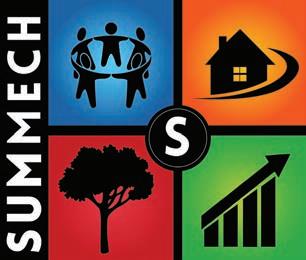





State Farm Insurance: Submitted by Harold Farm Insurance Agency, Inc.
Nothing feels better than home. Especially when you know it is protected. It isn’t just any home, it’s yours. The place where you unwind after a long day. Gather with your loved ones. And celebrate some of life’s biggest moments. We know how much it means to you. So protect it with homeowner’s coverage you can count on. At State Farm, we have the financial strength to help protect you from a wide variety of losses and over a 95 year track record to back it.
Think of homeowners insurance as protection that can help put your mind at ease. For example, if your home were damaged by a fire or someone broke in, your policy could help pay to rebuild your home or replace your possessions.
Without a policy, you’d have to cover those expenses out of your own pocket. So if you’re a homeowner. You need homeowners insurance.
As far as the amount of coverage on your home, it is recommended that you choose a coverage limit at least equal to your home’s estimated replacement cost: the amount necessary to rebuild your entire home. (The replacement cost is not the same as the market value, which is the price you can expect your home to yield on the market.)
As your life changes, your home may change along with it. It is recommended you review your homeowner’s coverage if:
• You move, improve your existing home, or build a new home
• You add a fire and/or burglar alarm system.
• You purchase items---such as jewelry and furs—that might exceed your basic coverage
Continued from page 7
installed in your home addition,” Bodrozic said. “This helps keep the contractor accountable and it helps you get things replaced a year later if things are not working because they should still be under warranty.
“You also need all this digital information at tax time because you can assess the costs of this addition and how it impacts your taxes and you need this information if you ever decide to sell the home, because it will be helpful in marketing your home and your taxes the year in which you sell it,” he said.
Not only do home additions make your home more enjoyable for you, but they also increase your home’s market value and when deciding which additions are right, each homeowner should consider the weather and design an addition that provides the greatest return on investment, said Craig Ricks, Jr., president of Acadian Windows and Siding.
“Screened-in porches are a great ad-
Your policy could help pay for a variety of property and liability claims:
• Under property, this includes your home and other structures on your property, such as a detached garage or a shed.
• This includes personal belongings inside your home, such as your clothing, furniture, electronics-and with limitations-certain valuables. It could even cover belongings you take with you while away from home.
• Under liability, you have financial protection against lawsuits. In certain situations, your homeowner policy could help protect your finances by paying for covered damages which you’re legally responsible for, and even your legal defense. For example, the policy could help cover legal defense costs if a visitor accidentally got hurt at your place and took you to court.
Your policy may also help pay for:
• Removal of your damaged property after a fire, or other loss covered by the policy
• Temporary repairs necessary to protect covered property from more damages
• Additional living expenses for your household to live elsewhere, if your home in uninhabitable because of damage covered by the policy. Each policy comes with deductible. A “deductible” is the amount that you are responsible for when you file a claim. Your deductible can be a fixed amount, such as $1000 or $2000, or a percentage of the coverage amount, such as one or two percent.
dition to homes in areas with months of warm and moderate weather … invest in a sunroom if you live in an area that experiences extreme weather; because the insulated sunroom blocks out harsh weather while still providing views and a porchlike experience,” Ricks said.
Homeowners also might consider creating a comfortable space rather than a fancy one or sacrifice a glossy paint finish to build a spacious area they’ll want to occupy,” Ricks said.
“Electrical is a low priority, including recessed lights, low voltage lighting, and sconce lighting is costly without significantly increasing your home’s resale value,” he said, adding also that pressure-treated wood makes your home addition last longer.
“This initial investment cuts costs of repairs,” Ricks said.
Generally, the higher the deductible, the lower the premium. But with a higher deductible, your financial responsibility would be higher if you file a claim.
To help make sure your coverage is up to date, it is a good idea to review your policy with your agent every year.
With more than 95 years of experience, the financial strength to back up our policies, and consistently high ratings from independent rate agencies, you can trust State Farm.

Homebuyer Education Classes
• Friday, June 7th and Saturday, June 22nd
• Friday, July 12th and Saturday, July 27th
• Friday, August 16th and Saturday, August 24th
• Friday, September 13th
• Saturday, September 21st
• Saturday, October 19th
• Saturday, November 16th
• Saturday, December 7th
Class Agenda

• Assessing Homeownership Readiness
• Down Payment Assistance
• Budgeting and Credit
• Financing and Shopping for a Home
• Home Insurance, and more
Class times: 9:00am-5:00pm
Registration fee: $50
• Saturday, June22nd
• Saturday, July 27th
• Saturday, August 24th
• Saturday, September 21st
• Saturday, October 19th
• Saturday, November 16th
• Saturday, December 7th
Class Agenda
• 203k Loan Products
• Renovation Process
• Down Payment Assistance
• Shopping for a Home
• And more




• Financing a Home Purchase and Renovation
Lunch provided Home Purchase Renovation Loan Classes
Class times: 1:00pm-4:00pm Registration fee: $30



By John Ahmann President & CEO of Westside Future Fund
234 Sunset Ave. I think about this address often. It’s in the heart of Vine City, one of the four targeted historic neighborhoods of the Westside Future Fund (WFF). As the Executive Director of the nonprofit, my job is to work on behalf of these neighborhoods, and, most importantly, the residents in them. As an Atlanta native, however, I was thinking about 234 Sunset Ave. long before my work with WFF began in May 2016.
234 Sunset Ave. was the adult home of the Rev. Dr. Martin Luther King, Jr., Atlanta’s native son and the 1964 winner of the Nobel Peace Prize. He was only 35 when he received the prestigious prize. He and Coretta bought their home on Sunset Avenue in 1965, using none of the half million (in today’s dollars) in proceeds from the prize. He
donated that to the Civil Rights Movement.
Like so many, I take strength and inspiration from the life and dreams of Dr. King. One of our only ten national holidays honors him. This Jan. 15, if he were alive and living in his Sunset home, I wonder what he might say.
234 Sunset Ave. is .08 miles or about a 15-minute walk from the new Mercedes-Benz Stadium. When former Mayor Kasim Reed and Atlanta Falcons owner Arthur Blank announced the location of the stadium in March 2013, they also pledged a renewed focus on the historic neighborhoods immediately west, across Northside Drive. In December 2014, the Westside Future Fund was born as a manifestation of this commitment – with the city’s top corporate and business leadership standing shoulder-to-shoulder with Mayor
“If I didn’t have access to Westside Future Fund, I couldn’t a ord to live in my neighborhood in the next 2-3 years.”
Ebony
English Avenue resident Anti-Displacement Tax Fund Recipient
Reed, in support of its creation.
Three years later, much has been accomplished, thanks to the collective time and treasure of so many (and too many to name in this piece). In fact, many of the improvements are within walking distance of Dr. King’s home: ü The opening of Westside Works training facility on Joseph Lowery in Vine City, a 15-minute walk ü The opening of the At-Youth Promise Center in the heart of English Avenue, about a 10-minute walk ü The opening of the BeltLine’s Westside Trail, about a 20-minute walk ü The groundbreaking of the YMCAs new headquarters and early learning center in the AUC neighborhood, about a 10-minute walk ü The repurposing of the shuttered Kennedy Middle School to the Hollis Innovation Academy, less than a 10-minute walk. WFF has announced $15 million in philan-
thropic support over five years to add more teachers and support services. ü The groundbreaking of the 16-acre Rodney Cook Sr. Park, about a five-minute walk ü The groundbreaking of the new Chick-fil-A on MLK Boulevard, about a 10-minute walk
234 Sunset sits near the middle of the four historic neighborhoods targeted by WFF, encompassing a total of 2.2 square miles. In 1965, these neighborhoods boasted approximately 50,000 residents; today the population is approximately 15,000 – many of them poor and suffering. I suspect if Dr. King were to walk his neighborhood, his heart would anguish at the plight he would see. He no doubt would note our progress, but I am sure would also challenge us to do much more.
Coming of age in Atlanta while it was de-populating in the 1980s, I did not imagine what is
happening today – a city projected to reach 1.2 million by 2050 from today’s population of half a million. With so many people moving into the City, the laws of supply and demand have taken hold. For many poor residents on the Westside, this means displacement because of rising property taxes due to assessment increases on their homes or because they are renting from private landlords who are either raising rents or selling.
To protect against raising property taxes for legacy residents, the WFF established the AntiDisplacement Tax Fund. Thanks to philanthropic donors, this initiative pays any property tax increases for homeowners who are below a certain income threshold. This, though, protects only a small percent of legacy residents because only about 8% are homeowners.
See WESTSIDE on page 13

The Westside is Vital for All of Atlanta to Thrive


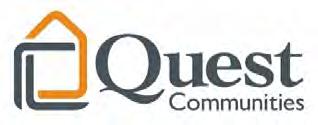
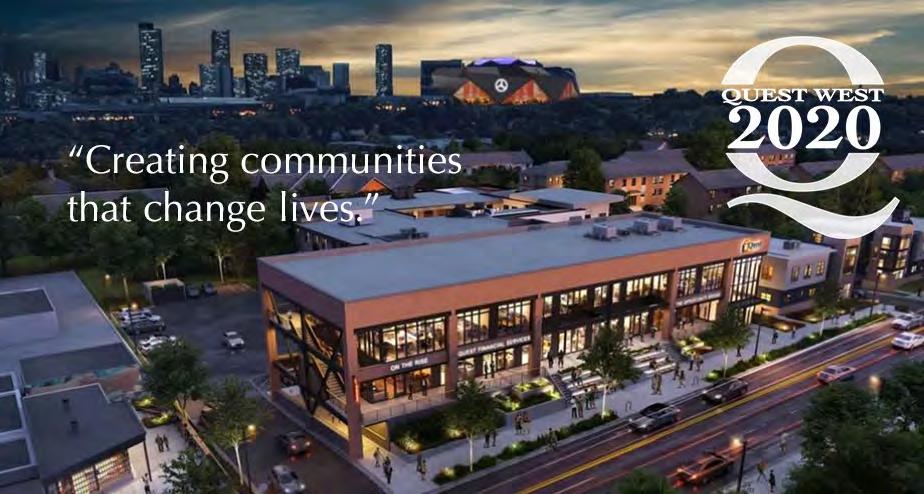
“Creating communities that change lives.”
Home ownership offers tremendous benefits for family life and often represents a gateway to generational wealth. The privilege of buying and maintaining a home is a major milestone for many Americans. However, there are countless individuals and families who are unable to take advantage of the American dream of home ownership for a variety of reasons, namely the inability to afford even a modest dwelling. This is particularly relevant in metro Atlanta. In fact, the City of Atlanta has the highest income dispar ity of any other major US city. Fortunately, non-profit organizations such as Quest Communities work with homeless, very low income, and physically/mentally impaired individuals to help them not only achieve a higher level of selfsufficiency, but to ultimately join the ranks of home ownership.
Quest Communities, founded in 2001 , has as its mission “to develop affordable housing and provide needs-based community services to enhance the quality of life for underserved individuals and families.” Quest provides services for homeless, very low income, and marginally housed persons on Atlanta’s Westside. We recognized early in our development that comprehensive supportive services coupled with stable housing was essential for client healing and self-sufficiency. Over the years, we have refined this approach to create a replicable model for transforming the lives of the people we serve.
Quest owns and/or manages over 200 housing units properties. As a nonprofit developer, Quest plans to add units on Atlanta’s Westside over the next three years currently manages the personal finances of well over 500 clients throughout the state of Georgia for whom Social Security has deemed them
Home ownership offers tremendous benefits for family life and often represents a gateway to generational wealth. The privilege of buying and maintaining a home is a major milestone for many Americans. However, there are countless individuals and families who are unable to take advantage of the American dream of home ownership for a variety of reasons, namely the inability to afford even a modest dwelling. This is particularly relevant in metro Atlanta. In fact, the City of Atlanta has the highest income disparity of any other major US city. Fortunately, non-profit organizations such as Quest Communities work with homeless, very low income, and physically/mentally impaired individuals to help them not only achieve a higher level of selfsufficiency, but to ultimately join the ranks of home ownership.
have refined this approach to create a replicable model for transforming the lives of the people we serve.
Quest owns and/or manages over 200 housing units, 11 single family homes, and 4 commercial properties. As a nonprofit developer, Quest plans to add 452 additional affordable housing units on Atlanta’s Westside over the next three years totaling $87 million. In addition, Quest currently manages the personal finances of well over 500 clients throughout the state of Georgia for whom Social Security has deemed them unable to manage their own finances.

Quest develops affordable housing for underserved individuals and families, and reduces barriers to economic mobility. Quest revitalizes, not only the communities we serve, but the people who reside there. Quest owns and operates affordable housing units that serve as vehicles for anti-displacement and resident stabilization. communities for those who have been disenfranchised. Our approach positions communities and residents to break the cycle of generational poverty.
supportive community. The work that we do every day is less about building affordable housing and more about building stable and vibrant communities.
Communities are the epicenter for social change. This understanding drives us to help transform lives for generations to come through the power of supportive community. The work that we do every day is less about building affordable housing and more about building s table and vibrant communities
fordable housing, proving that equity can be delivered across the socio-economic divide. At Quest, we know that a community can change a life, and that life can change the world.
Quest Communities, founded in 2001, has as its mission “to develop affordable housing and provide needs-based community services to enhance the quality of life for underserved individuals and families.” Quest provides services for homeless, very low income, and marginally housed persons on Atlanta’s Westside. We recognized early in our development that comprehensive supportive services coupled with stable housing was essential for client healing and self-sufficiency. Over the years, we
Quest develops affordable housing for underserved individuals and families, and reduces barriers to economic mobility. Quest revitalizes, not only the communities we serve, but the people who reside there. Quest owns and operates affordable housing units that serve as vehicles for anti-displacement and resident stabilization. We strive to build stable and vibrant communities for those who have been disenfranchised. Our approach positions communities and residents to break the cycle of generational poverty.
Communities are the epicenter for social change. This understanding drives us to help transform lives for generations to come through the power of
For almost 20 years, we’ve created intentional communities to demonstrate that everyone deserves an opportunity to achieve their goals and dreams. Our work ultimately helps to change the perception around af-
If you’re interested in volunteering at Quest or making a donation, please visit our website at www.questcommunities.org.
• Quest is the largest owner/manager of supportive housing in Atlanta
• 90% of Quest residents do not return to homelessness
• Quest is Atlanta’s largest nonprofit developer of housing for persons below 30% AMI (average median income)
• Quest recently completed a $5 million capital campaign to build a 26,000 sf Quest Nonprofit Center for Change
• Quest plans to invest $87 million in affordable housing for very low income individuals and families over the next three years
• Quest has provided comprehensive supportive services to approximately 8,000 persons in its nearly 20 years of existence
• Based on federal guidelines that measure quality in supportive housing, Quest scores among the best providers in metropolitan Atlanta
WFF has done research that indicates that 75 percent of residents are renting from private landlords, thus unprotected by the inevitable laws of supply and demand. Over half are earning under $20,000, so rents above $500 are not affordable. Now is the time to ensure the legacy residents of these historic neighborhoods can remain here so that the rising tide will lift all boats. It will require philanthropic and public funding to get it done.
Our new mayor, Ms. Keisha Lance Bottoms, understands the magnitude of this challenge. She pledged that, if elected, she would raise $1 billion in public and private funds for antidisplacement and affordable housing. She made this commitment standing in front of her family home on Burbank Drive, 1.5 miles from 234 Sunset. This is an unprecedented commitment, especially with its focus on anti-displacement.
Often, affordable housing advocates focus on the 6080 percent area median income (AMI) for new developments, often referred to as “workforce housing.” For Fulton County, the federal income limit for a family of four is $69,700 annually, so workforce housing for families of four is earnings between $41,820 and $55,750. However, many households on the Westside are led by single earners working for minimum wage or $15,080 a year. That is 13 percent AMI. Even what is referred to as a living wage, approximately $15 per hour, is $31,200 or less than 50 percent AMI.
The challenge is that what was once affordable to minimum wage workers is no longer, as land prices go up and the private investor cashes out. Noted Georgia State University housing research expert Dr. Dan Immergluck conservatively estimates we are losing over 1,000 of this type of units a year. As a result, renters are being displaced further down the road from jobs, further down the road from improvements in their own neighborhoods
We need philanthropic and public dollars to buy much of the privately owned rental stock, rehabilitate it and keep if affordable for the workers earning 30 percent AMI or less. In just the four WFF neighborhoods, we estimate it could cost over $100 million to buy all this privately held rental stock – and that does not include rehabilitation costs.
I think Dr. King would marvel at the triumphs of Atlanta and America. He would applaud that Atlanta has just elected it’s second female mayor and an Atlanta native.
But I think he would also challenge us that with prosperity comes obligation. At a time when Atlanta is in a position to bring the dream to life for many of its suffering residents in Dr. King’s neighborhoods, we must work hard so that they are not priced out and pushed out.
To help with our anti-displacement efforts, please consider a philanthropic contribution. To
learn more, please come to one of our bimonthly Transform Westside Summits, held the first and third Friday morning of each month. More information is available at www.westsidefuturefund.org. Please join us and help ensure this becomes a community Dr. King would be proud to call home.
About John Ahmann: John Ahmann has had a hand in some of the city’s most important public policy initiatives and cross-sector collaborations during his career with the Olympic Games, State of Georgia, Metro Atlanta Chamber, Decatur School Board, Atlanta Committee for Progress and now the Westside Future Fund. John focuses his energy on solving big problems and is determined to improve the way communities and institutions function in Atlanta.
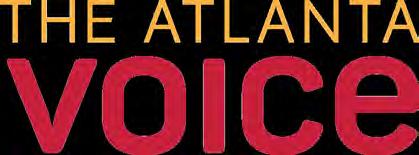


MARCIA GRIFFIN, Founder & President HomeFree-USA
June is National Homeownership Month, a time when we celebrate the benefits of owning a home. However, National Homeownership Month also challenges us to do all that we can to make the dream of homeownership accessible to as many Americans as possible.
On that front, we have a lot of work to do.
For diverse communities, homeownership is a cornerstone of family wealth. Yet, for many minorities, homeownership has become a dream deferred. For
Black Americans in particular, homeownership rates aren’t any better today than they were 50 years ago.
But it doesn’t have to be that way. Many more Americans can step into their power to create a better life through homeownership if they have the support and the tools that they need.
That’s why HomeFree-USA is so very excited to announce the launch of Step into your Power: Prepare for Success through Homeownership, a groundbreaking initiative designed to empower diverse communities to move past the psychological and economic challenges that have been holding them back.
National Homeownership Month is about celebrating successes and rewarding economic gains. That makes this the perfect time to launch this innovative program because Step into your Power is designed to help potential homebuyers reach their fullest potential. This life-transforming movement will start in Baltimore and later be rolled out to other cities across the country.
At the heart of the Step into your Power program are the ideas of planning and
preparation. Every achievement requires some level of preparation. Preparing families to be financially sound is what HomeFree-USA and our network of partners do best. In order to become successful homeowners, consumers must master their credit and finances so they can not only qualify for a mortgage loan but gain the skills and knowledge to maintain a home.
This program is particularly powerful because it has the backing of some business and financial heavyweights who have stepped up to the plate to give minority homebuyers the push that they need to succeed.
Author, educator and leadership development expert Stedman Graham has been teaching self-actualization principles that help people discover who they can be, and he will bring those insights to energize Baltimore residents as they prepare for success.
“Having a strong sense of and belief in self provides the foundation for maximizing our potential,” Graham says. “We’ll begin in Baltimore where the need is great and the climate is perfect for the good of the people.”
Wells Fargo is showing its commitment
to Baltimore by offering qualified Baltimore City homebuyers up to $15,000 for down payment and closing costs through a program called Neighborhood Lift. The move falls under Wells Fargo’s goal of creating 250,000 African American homeowners by 2027.
Freddie Mac is also providing financial support to ensure that Step into your Power reaches as many potential homebuyers as possible.
As we go into National Homeownership Month, we know:
• We all have the power to achieve.
• We all have the power to do better.
• We all have a responsibility to make homeownership as affordable and accessible as possible.
Through Step into your Power, we’re rising to the challenge of National Homeownership Month and creating a new pipeline for minority homeowners. We hope others will rise to the challenge and join us.
Lear more at www.homefreeusa.org.


By Jeffrey Hicks, President, National Association of Real Estate Brokers and John Smaby, President, National Association of Realtors
To many people in this country, homeownership is synonymous with the American Dream. Homeownership provides for stable communities, increases civic participation, and builds our feelings of self-worth and self-esteem. In fact, studies have shown that the children of homeowners go on to earn more as adults.
But, sadly, stark racial disparities in the rate of homeownership demonstrate that this dream remains out of reach for countless families and potential home buyers across the U.S. For example, the rate of homeownership for African Americans has returned to levels not seen since before the passage of the Fair Housing Act fifty years ago. The National Association of Real Estate Brokers, Inc. has documented the issue through its annual State of Housing in Black America reports.
In response to this continuing crisis, NAREB, the National Association of Realtors® and the Urban Institute recently convened a roundtable focusing on improving African American homeownership rates. A five-point framework that can be applied across all minority communities emerged and continues to be developed as we work to increase homeownership levels for all populations in America.
First, and perhaps most importantly, we are determining how to effectively advance relevant policy solutions at the local level. In any effort to address housing affordability and accessibility, the focus of our second principle, we believe state and local governments must take the lead on actions that will create additional opportunities for aspiring homeowners.
Specifically, these potential solutions emphasize the responsible expansion of small-dollar mortgages for purchase and renovation; the reform of local land-use and building codes; and the potential expansion implementation of property tax relief for low- and moderate-income taxpayers.
Additionally, as new Federal Housing Finance Agency Director Mark Calabria outlines his organization’s plans to reform – and end the conservatorship of – Fannie Mae and Freddie Mac, NAREB
and NAR see an opportunity to secure an equitable and accessible housing finance system. This is the third principle in our five-point framework. All responsible and creditworthy Americans must maintain access to affordable and sustainable credit, and no American should pay more for or be unable to secure a mortgage simply because of where they live or the color of their skin. Responsible reform will maintain these critical tenants of our housing finance system.
Despite fifty years of genuine federal efforts in these arenas, white homeownership rates of 73.2% still significantly exceed black and Hispanic rates of 41.1% and 47.4%, respectively. A focus on sustainable homeownership and preservation for this nation’s minority communities represents our fourth point.
While rates for African Americans have regressed in spite of the presence of Fair Housing laws, it is clear that various institutional challenges must be faced and defeated in order to truly solve this problem. Namely, all mortgage lenders, staff at servicing companies and real estate agents must understand the importance of this issue and the impact housing discrimination can have on our nation’s economy.
By strengthening post purchase counseling; funding programs to prevent foreclosure for lowand moderate-income and vulnerable families of color; and building tools that help create early-warning displacement triggers, we can ensure first-time homebuyers have the knowledge and the resources to remain homeowners for the rest of their lives.
Finally, we believe accelerating outreach
and counseling for renters and mortgage-ready millennials will be key to get our next generation of homeowners in the position to purchase property.
That can happen by revitalizing and improving tax credit incentives for renters who want to become owners; by expanding programs that automate saving for down payments; and by expanding the reach and effectiveness of financial education and housing counseling courses
NAREB and NAR also strongly support the production of affordable housing and efforts to increase the supply of entry-level homes. We encourage states and municipalities to encourage African American home building entities, and we
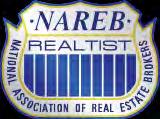
believe governments must consider the input of local experts as they adopt zoning laws, building codes and other policies that encourage free market production of affordable housing units.
If America is to remain a nation of homeowners, we must address the persistent barriers that minorities continue to face. NAREB and NAR’s policy solutions and proposals represent a critical and much needed step towards ensuring the American Dream of homeownership is indeed available to everyone in this country.
For More information visit - www.nareb.com.

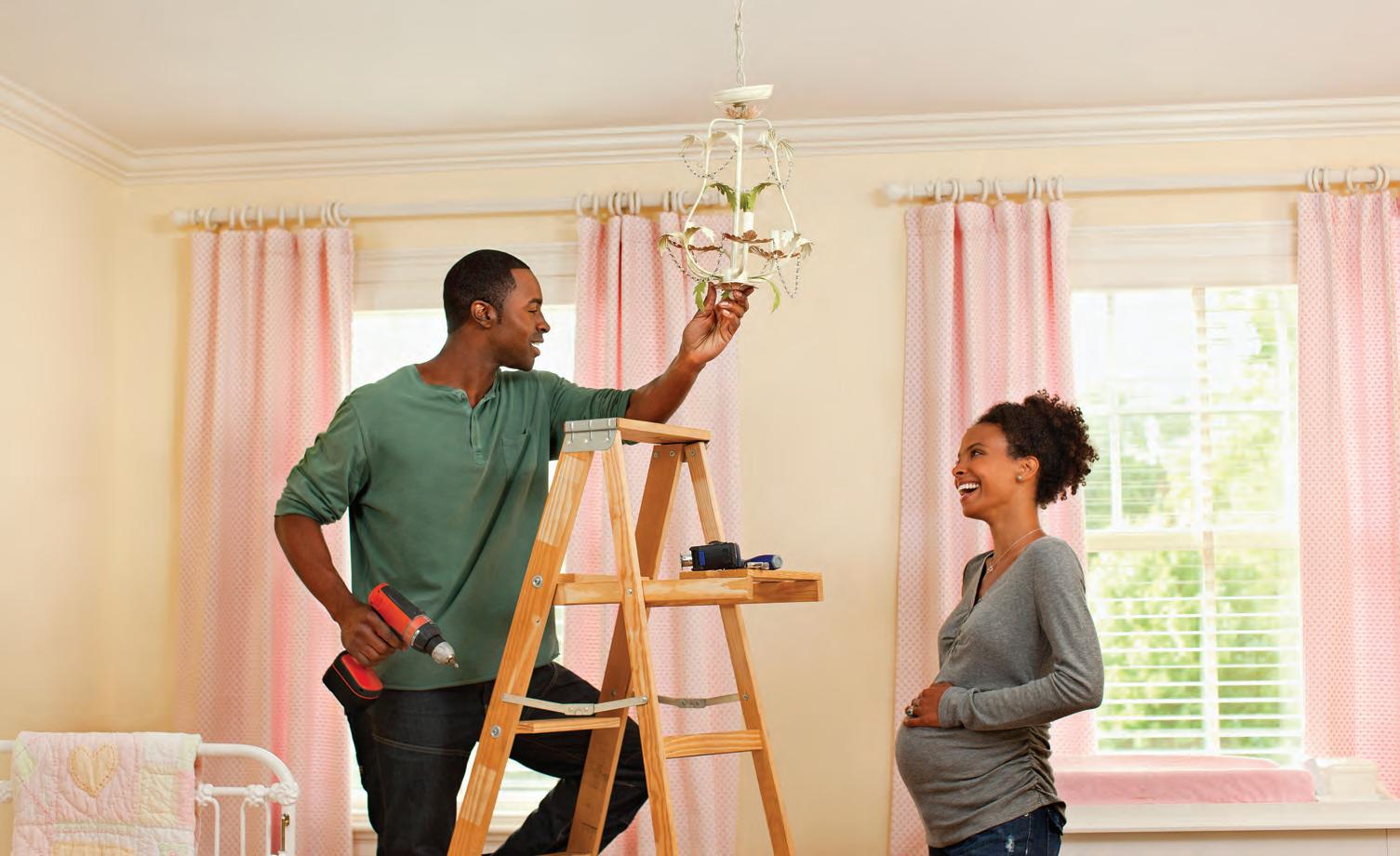
Homeownership is woven into the soul of America. Owning a home puts down roots in the community and grows strong families where people are invested in and care about each other. Our goal is to help you take steps towards homeownership. We’ll work together with people and programs to educate and prepare you as a homebuyer and support you as a homeowner.
We’re here for you. Let’s take that first step. Call, stop by, or click today!
250 E Ponce De Leon Ave Floor 02
Decatur, GA 30030-3440 (404) 929-4731
wfhm.com/loans/decatur/index-branch.page